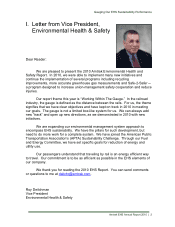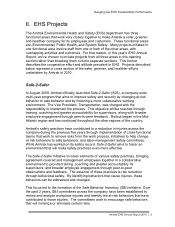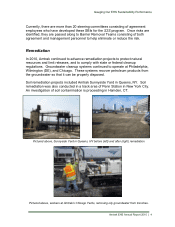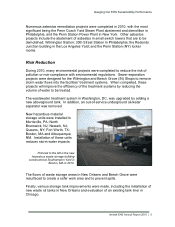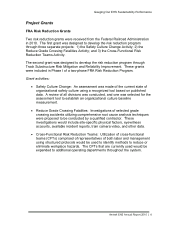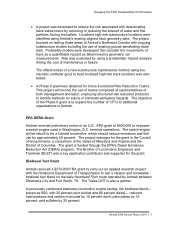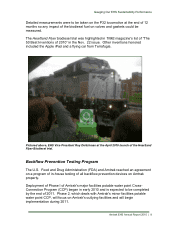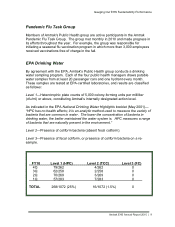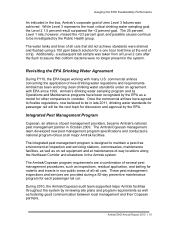Amtrak 2010 Annual Report Download - page 13
Download and view the complete annual report
Please find page 13 of the 2010 Amtrak annual report below. You can navigate through the pages in the report by either clicking on the pages listed below, or by using the keyword search tool below to find specific information within the annual report.
Gauging Our EHS Sustainability Performance
Amtrak EHS Annual Report 2010 | 12
Los Angeles
A team comprised of Mechanical and onboard employees identified nine areas of
concern resulting from needles and lancets, also known as sharps, being
discarded by railroad passengers. Potential locations include trash receptacles,
seat-back pockets, and seat cushions. Overly lightweight trash bags and
improperly sized and worn securing cords for trash bags can results in sharps
falling into locations where they are not easily seen, thereby placing Mechanical
personnel at risk when performing manual cleaning duties.
A pilot project to address these concerns has been initiated aboard the Coast
Starlight. Interventions included changing to thicker trash bags and properly sized
securing cords. Other recommendations included display of “No Sharps” signage
on trash receptacles; written instruction in the Customer Safety Instructions
booklet; onboard announcements; and an employee safety alert advising of the
possible presence of sharps. The calculated risk index was lowered from 402 to
231, a 43 percent reduction.
Seattle
A CFT representing mechanics at Seattle, WA, addressed 24 separate safety
concerns associated with the current practice of changing couplers by using
forklifts, chains, and wood blocks.
The team eliminated 12 of their safety concerns by fabricating a jig that properly
secures couplers to the forklift. Additional interventions include use of a portable
air compressor to eliminate the presence of air hoses in the work area; use of a
forklift “spotter” to facilitate moving the coupler on the forklift; identifying/securing
the work area by using highly visible cones; issuing safety alerts to identify the
appropriate hand tools and personal protective equipment required for the job; and
distribution of “best practices” documents that describe proper procedures.
Overall, the team lowered the risk rating from 300 to 81, a 73 percent reduction.
Based on the improvements in both safety and efficiency from the new procedures,
the Los Angeles mechanical facility ordered two of the jigs for use there.


